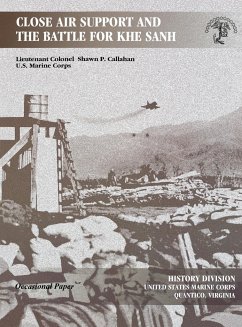The battles of Dienbienphu and Khe Sanh have many similarities. Both were fought in Vietnam on similar terrain. Both were at the end of long supply lines in isolated jungle areas. Both involved a protracted siege of the defending forces whose success or failure was dependent on their ability to resupply by air and provide close air support against the attacking enemy formations. Yet one force, the French were defeated by a seemingly lightly armed guerrilla force, while the American Marines, opposed by the regular army forces of the North Vietnamese Army, were successful. Furthermore, the level of casualties on both sides were astonishing. At Dienbienphu, the French suffered over 12,350 total casualties as well as having 6,500 taken prisoner at the end of the battle, many of which were never heard from again. The Americans on the other hand suffered comparatively light casualties. 354 battle deaths and 2024 wounded were suffered during the fourteen months of combat operations beginning in April 1967 and ending in June 1968. The primary reason for the American success and the French failure during these two battles was their ability to conduct aerial resupply of the garrison and the hilltop outposts at Khe Sanh and the French inability to provide the necessary materials for their garrison. In addition to aerial resupply, was the American's ability to provide close air support for their positions during the siege as well as fly interdiction missions along the NVA supply lines to slow down or reduce the amount of supplies and troops available for their assaults. This work has been selected by scholars as being culturally important, and is part of the knowledge base of civilization as we know it. This work was reproduced from the original artifact, and remains as true to the original work as possible. Therefore, you will see the original copyright references, library stamps (as most of these works have been housed in our most important libraries around the world), and other notations in the work. This work is in the public domain in the United States of America, and possibly other nations. Within the United States, you may freely copy and distribute this work, as no entity (individual or corporate) has a copyright on the body of the work. As a reproduction of a historical artifact, this work may contain missing or blurred pages, poor pictures, errant marks, etc. Scholars believe, and we concur, that this work is important enough to be preserved, reproduced, and made generally available to the public. We appreciate your support of the preservation process, and thank you for being an important part of keeping this knowledge alive and relevant.
Bitte wählen Sie Ihr Anliegen aus.
Rechnungen
Retourenschein anfordern
Bestellstatus
Storno








